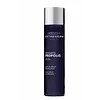What's inside
What's inside
 Key Ingredients
Key Ingredients

 Benefits
Benefits

 Concerns
Concerns

 Ingredients Side-by-side
Ingredients Side-by-side

Water
Skin ConditioningGluconolactone
Skin ConditioningNiacinamide
SmoothingGlycerin
HumectantPropylene Glycol
HumectantLactic Acid
BufferingEthoxydiglycol
HumectantMagnesium Chloride
Malic Acid
BufferingArctium Lappa Root Extract
Skin ConditioningCochlearia Armoracia Root Extract
MaskingQuillaja Saponaria Bark Extract
CleansingArnica Montana Flower Extract
MaskingCapsicum Frutescens Fruit Extract
Skin ConditioningPhytic Acid
Citric Acid
BufferingSodium Lactate
BufferingAllantoin
Skin ConditioningSerine
MaskingSulfur
AntiseborrhoeicVinegar
Sodium Salicylate
PreservativeSorbitol
HumectantTea-Lactate
HumectantUrea
BufferingSodium Benzoate
MaskingSodium Bisulfite
AntioxidantWater, Gluconolactone, Niacinamide, Glycerin, Propylene Glycol, Lactic Acid, Ethoxydiglycol, Magnesium Chloride, Malic Acid, Arctium Lappa Root Extract, Cochlearia Armoracia Root Extract, Quillaja Saponaria Bark Extract, Arnica Montana Flower Extract, Capsicum Frutescens Fruit Extract, Phytic Acid, Citric Acid, Sodium Lactate, Allantoin, Serine, Sulfur, Vinegar, Sodium Salicylate, Sorbitol, Tea-Lactate, Urea, Sodium Benzoate, Sodium Bisulfite
Ingredients Explained
These ingredients are found in both products.
Ingredients higher up in an ingredient list are typically present in a larger amount.
Citric Acid is an alpha hydroxy acid (AHA) naturally found in citrus fruits like oranges, lemons, and limes.
Like other AHAs, citric acid can exfoliate skin by breaking down the bonds that hold dead skin cells together. This helps reveal smoother and brighter skin underneath.
However, this exfoliating effect only happens at high concentrations (20%) which can be hard to find in cosmetic products.
Due to this, citric acid is usually included in small amounts as a pH adjuster. This helps keep products slightly more acidic and compatible with skin's natural pH.
In skincare formulas, citric acid can:
While it can provide some skin benefits, research shows lactic acid and glycolic acid are generally more effective and less irritating exfoliants.
Most citric acid used in skincare today is made by fermenting sugars (usually from molasses). This synthetic version is identical to the natural citrus form but easier to stabilize and use in formulations.
Read more about some other popular AHA's here:
Learn more about Citric AcidPropylene Glycol is an odorless, colorless liquid. As a humectant, it helps skin retain moisture. It also aids in delivering active ingredients.
Another role of this ingredient is preventing a product from melting or freezing. Propylene glycol also adds antimicrobrial properties to a product, elongating product lifespan.
This ingredient is considered an organic alcohol and commonly added into both cosmetics and foods.
Those with sensitive skin or conditions may develop a rash when using this ingredient.
Learn more about Propylene GlycolWater. It's the most common cosmetic ingredient of all. You'll usually see it at the top of ingredient lists, meaning that it makes up the largest part of the product.
So why is it so popular? Water most often acts as a solvent - this means that it helps dissolve other ingredients into the formulation.
You'll also recognize water as that liquid we all need to stay alive. If you see this, drink a glass of water. Stay hydrated!
Learn more about Water